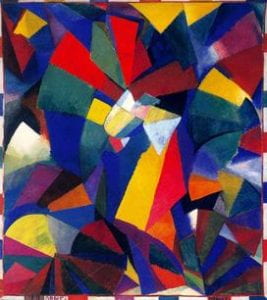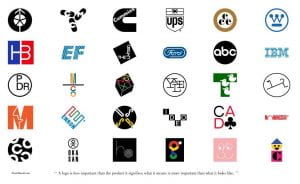In week 6 Pauline delivered this lecture titled- WW1 and Modernism.
What is Modernism?
Modernism was a period of experimentation that began after World War One, in the late 19th century to mid 20th century. The aim was moving forward, out of the dark times of the war and the vision was human life with the belief in progress. These visions pervaded in the arts, literature, philosophy and architecture.
How has Modernism effected design?
Modernism changed the thinking process for graphic designers and typographers. The designers within this era abided to strict rules, including the use of grid systems and emphasising negative space. The idea behind this movement was to create clean, strong graphics that were against greed and commercialism.
Features of modernism:
- use of primary colours
- geometric shapes- circles, triangles
- use of sanserfi typefaces
- use of asymmetric page layout
- use of grids
- planned visual hierarchy
Typefaces used in this modernism era were:
- Futura
- Helvetica
- Gothic
Artists who have inspired me
Graphic design was born in the 1950’s, this was when it was finally recognised widely as a disciplinary and Pauline discussed the key people working in that industry at that particular time and Jan Tschichold was one of them.
Jan Tschichold
Tschichold was best known for his book designs and typography work , he also played a significant role in the evolution and growth of graphic design in the 20th century. His most famous work was his designs for the classic, original Penguin Book covers in the 1940’s (shown below).
“White space is to be regarded as an active element, not a passive background.”
I like his use of colour, I am attracted to his simple but very effective colour palettes. I am really into reading fiction books and I always notice a really nice book cover, so I had to mention Tschichold in this blogpost. Tschichold broke ‘modernism rules’ with his penguin book design with the typeface he used and his centres text. The simplicity of the design and overall layout, alongside his choice of typefaces are compatible and they harmonise well, I am going to make a mental note to experiment with this type of style in my future graphic work.
Paul Rand
Paul Rand (1914) was another artists Pauline mentioned within her lecture and he was an American graphic designer who became well known for his corporate logo designs. With his logo work and designs he became the first American designer to practise the Swiss style of graphic design, they were clean and contemporary. I wanted to look at Rand as an artist and his work as I am attracted to his style.
“One quickly realizes that simplicity and geometry are the language of timelessness and universality”.
From 1955 onwards, after the war, he helped transform the whole advertising and design industry, he emphasised the importance of graphic design and the design elements and visuals over writing. With this vision, he created multiple clean and colourful logos/identities for numerous brands across the globe. Rands’ work with creating identities for multiple, huge brands single handily transformed corporate communication and design in, especially in North America. His style still has a massive impact on graphic design today and not only in the USA but worldwide.
Rands’ work has influenced me to look at the world with fresh eyes, as he said himself,
“Everything is design!”
I had a go at remaking my own logo designs, my remakes are on the right hand side, shown below. I did this exercise to practise my digital design skills and improve upon them, this gave me a good feel for logos and their layout and structure.
Reflection
I am fond of the Modernism vision and the techniques used within this movement, the graphic work within this era is undoubtedly to my taste and the characterises are something I will return to in the future. I especially am fond of the work of Paul Rand and I appreciate his logos and that is another area I like to play around with and experiment with in my free time. I enjoyed researching these artists and this movement, these types of lectures give me exposure to important movements that have shaped the industry and in particular the artists I have researched further within this post I know I will refer back to in the future for further reference and inspiration.





